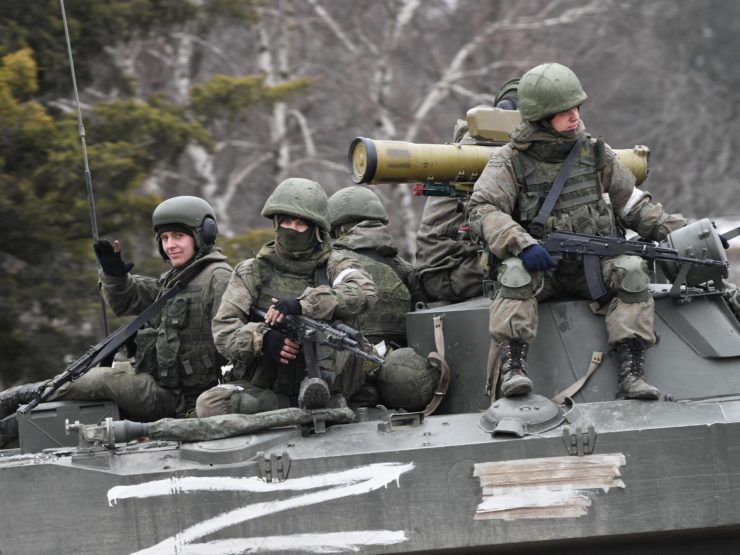
Since the conflict in Ukraine began, Western governments and media have been propagating that Russia is falling or will collapse militarily and economically due to the conflict itself and/or sanctions. While it is true that Russia is facing an extremely harrowing time due to the sanctions, it is not collapsing at all, but economically growing. With respect to Russia’s military, it was stated by so-called experts that Russia’s arms industry will not be able to sustain itself and that the Russian Armed Forces will run short on ammo and weapons. This is also unfactual, and the article aims to highlight this.
Russia is ready for a long grind in Ukraine, even if the West prolongs this conflict. For months, Western experts shouted that Russia is running out of long-range missiles, but reality has laid waste to such claims. The Center for Strategic and International Studies reports that “it is unrealistic to expect Russia to ever ‘run out’ of missiles” as the country has been constantly using long-range missiles in the war, which means despite sanctions it has the capabilities and/or the ability to acquire from elsewhere. While sanctions and export control have made it difficult for the country to acquire parts to make missiles, it has not stopped them, and it is unlikely that it will in the future. In fact, evidence suggests that Russia is producing new cruise missiles, and even Ukrainian intelligence states that Russia has enhanced its production of Kalibr cruise missiles.
Russia’s ammunition production has increased by more than 12 times. Russia also stated that compared to 2022, the amount of purchased armaments proliferated by 170% and “especially needed weapons” by seven times. Additionally, Russia’s allies such as Belarus and Iran have been supplying it with ammunition. Reportedly, Belarus sent over 130,000 tons of ammunition to Russia. Iran, on the other hand, has supplied Russia with around 300,000 artillery shells along with a million rounds of other ammo in the last 6 months, reported The Washington Post on April 24. Iran has also been a pivotal ally for Russia due to its supply of drones to Russia. Iran has reportedly agreed to send at least 1700 drones to Russia and has received hundreds of drones already.
As for tanks, their production stand increased as well despite sanctions. Uralvagonzavod, a Russian machine-building company, tripled its output in the past year and has been supplying T-72B3M tanks as well as T-90M Proryvs. This has raised doubts about how beneficial the sanctions have been in reducing Russia’s arms production. There is also evidence and video proof that Russia is stockpiling a huge number of T-90M and T-72 tanks in Ukraine. The country also endeavors to produce at least 1600 T-90M tanks in 2023 – most will be sent to Ukraine.
One reason why Russia has still managed to increase weapons and munition production is due to its ability to circumvent the sanctions. Russia has been able to use countries such as China and Kazakhstan as middlemen to import banned high-tech items. “The pathway for these imports has been indirect, with key European and U.S. manufacturers selling sanctioned goods to companies in third countries that re-export the merchandise to Russia.”
Russia has also used old Soviet-era tanks and vehicles to fill the void left by sanctions and the conflict. It has used a plethora of Soviet-era equipment and has many in storage still. The Commander of the Estonian Defence Forces stated that despite losses in equipment and tanks, Russia has vast reserves when it comes to tanks. He said that Russia has around 9000 tanks in repair and storage bases – he also said it has many armored vehicles in reserves as well. Due to its mobilization efforts, it also has an additional 300,000 troops, he said. According to US Army General Christopher Cavoli, Russian ground forces are larger than when the conflict began despite losses to Ukraine. Furthermore, there are murmurings that Russia plans to adapt its P500, P700, and P1000 missiles, which are all antiquated Soviet anti-ship missiles, into surface-to-surface-missiles. This is a smart strategy as it gives the Russian defense ministry time and space to produce more modern tanks and missiles and at the same time chip away against the Ukrainians.
The irony is that due to this conflict, the Russian Armed Forces have become more adept and stand augmented, not depleted as the West would want you to think. Tony Cox, a US journalist, writes that “Moscow’s forces are inarguably stronger, better-armed and larger today than when the conflict started in February 2022.” Furthermore, the Russians have become battle-hardened due to fighting a NATO-trained and equipped Ukrainian army. Western officials have even praised the Russians’ new tactics in countering Ukrainian forces. Therefore, this experience that Russia’s forces are acquiring is priceless.
Taut Bataut – is a researcher and writer that publishes on South Asian geopolitics, exclusively for the online magazine “New Eastern Outlook”.
